The abruzzo maremma sheepdog
A "modern" dog, that disguises behind ancient and brave behavior
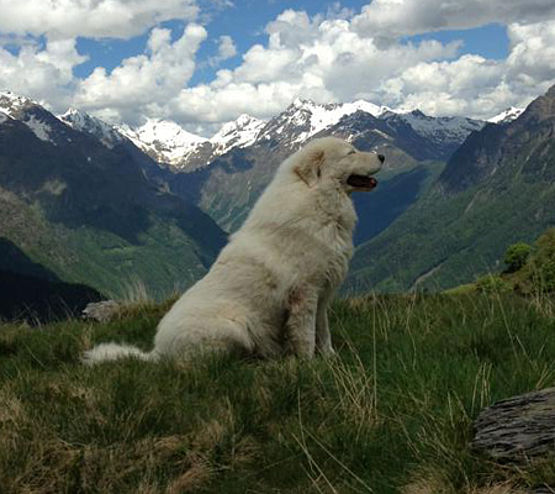
The Abruzzo Maremma Sheepdog is a result of a very long selection process having its origins in the necessities of the Italian transhumant shepherding of the Central-South Italy, in particular the Abruzzo region.
The agricultural context and the economies of the transhumant shepherding are hence the one and only true cultural and historical niche that turned out to be the perfect hosting place for our white guardians. Years of natural and anthropological selection have made him the noble dog, as we know him nowadays: even-tempered and reliable, full of pride and dignity, majestic and enticing, the dog that only those who don’t know him are not keen about.
The beauty of these white guardians I obvious in any circumstance, but after having been seduced by these magnificent animals doing their work in the wild and solitary Apennines Mountains, seeing them walking on leash in town is almost banal. The main task, the “raison d’etre” of the Maremma sheepdog is to protect the livestock from the wolfs that have been haunting the domestic herds since immemorial times.
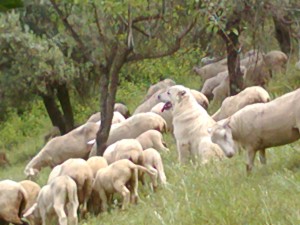
The specific chaaracter traits of this breed are braveness, a strong attachment to the sheep and the territory, and total lack of predatory instinct. The true lovers of this fantastic breed shall appreciate not only its esthetics, but also its ecological and historical background. Those who purchase a maremma uppy from a breeder shall insist on having an “original” and not an “imitation”. Isn’t it awesome imagining that the same fluffy whote puppy living a happy life in your backgarden could have become a ferocious and unbribable livestock guardian?! The point is, that the natural attitude of our dogs shall be preserved and not forgotten.
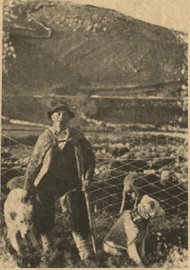
These ancient dogs that have always been used by the shepherds to protect the livestock have been subject to a tough selection aimed at guaranteeing certain somatic traits:
- Big dimensions and strength, in order to offer protection from prey animals or cattle-raiding outlaws either on their own or in a pack.
- Sobriety, frugality and rusticity to face the hard life of a livestock guardian, subject to continuous wanderings, poor nourishment and bad weather conditions.
- Dense and semi-long fur with thick undercoat that offers perfect thermal insulation as well as an eaves-effect in case of extended exposure to rain.
- White fur helpful to camouflage within the herd in case of predatory attacks during the night hours, as well as easy enough to be recognized and not to be shot by the shepherd in a fight with wolves or other animals.
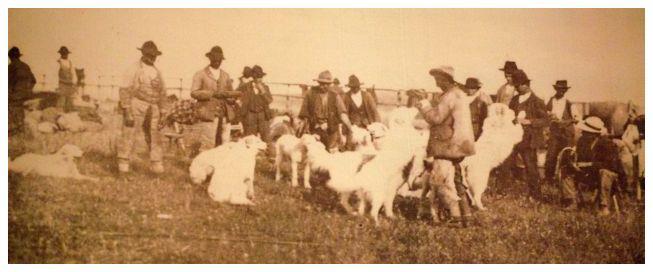
Other high-value psychic traits were needed:
- Attachment to the herd.
- Innate protection instinct.
- Equilibrium and self-decision capacity.
Profession guardian dog
- without the need for dressure
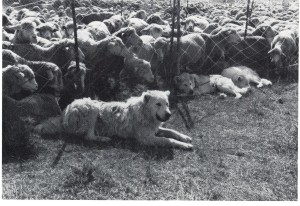
A typical working day for a Maremma starts at the very spring of day: walking out of the sheep pen together with the sheep, going to pasture barking in order to communicate his presence. Walks all around the area where in a few moments the sheep will arrive to pasture to detect traces of its main antagonist and enemy: the wolf. In case he detects something suspicious, the Maremma starts barking. After that, he escorts the sheep to the pasture, but if he detects a strange sound or smell, he starts growling; if on the other hand the day is calm, the Maremma tends to stay at the highest point of the pasture observing the territory and keeping under control the situation.
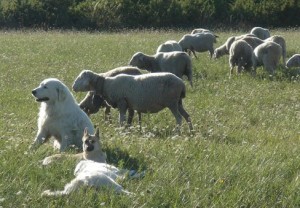
The wonderful white giants start doing their first steps together with the herd very early, around 2 months old, following their natural instinct and without the need of being taught anything in particular.
During the long afternoons on the pasture ground, time passes by very slowly. The Maremmas rest in the shadow, almost invisible to the passer-byes, or if the herd is moving, follow the sheep in a half-wake. Only the young one are full of energy and try to play with some of the more patient elders.
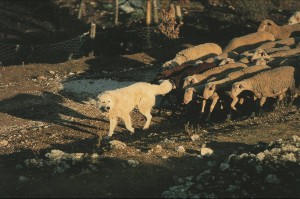
Females are a bit more wakeful than the males and stay seated instead of laying on the side. If the dog is guarding a house or any other kind of property rather than a moving livestock herd, he will choose very attentively the point from which he can keep under control all the accesses, and will stay there day by day like a white sphinx, ready to counter any intruder.
